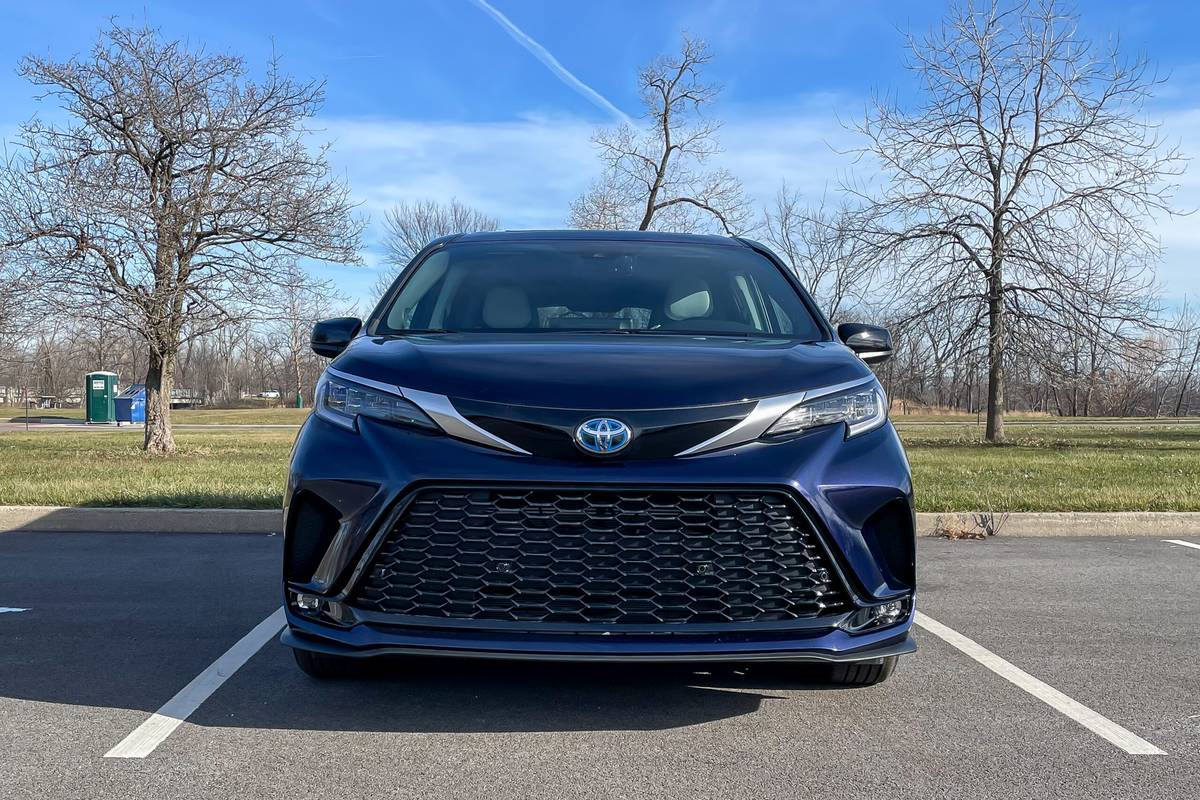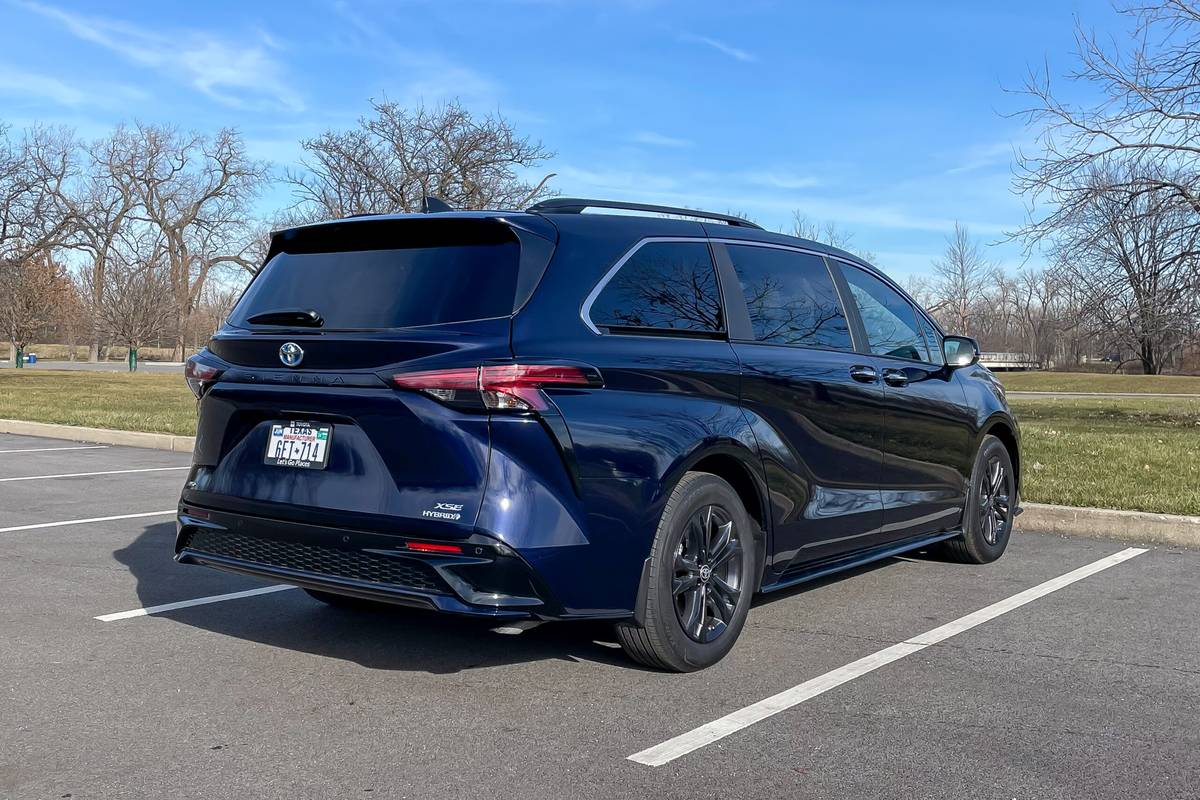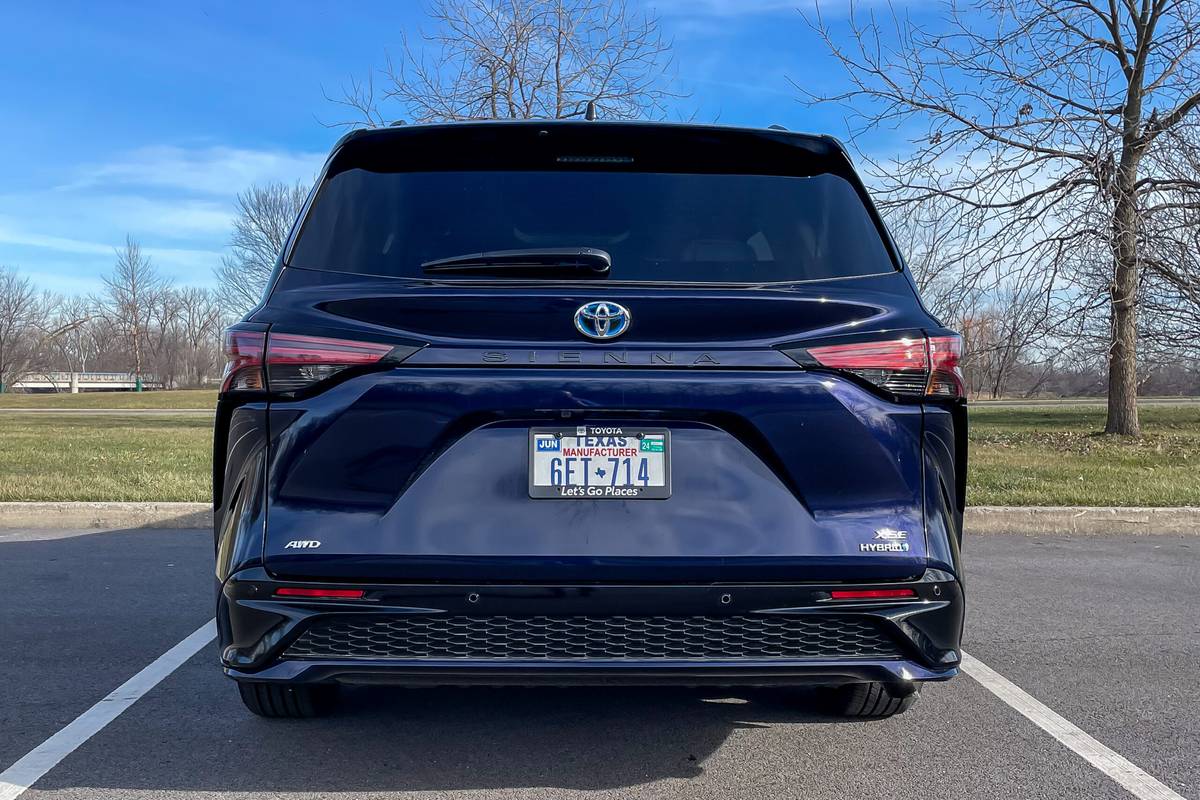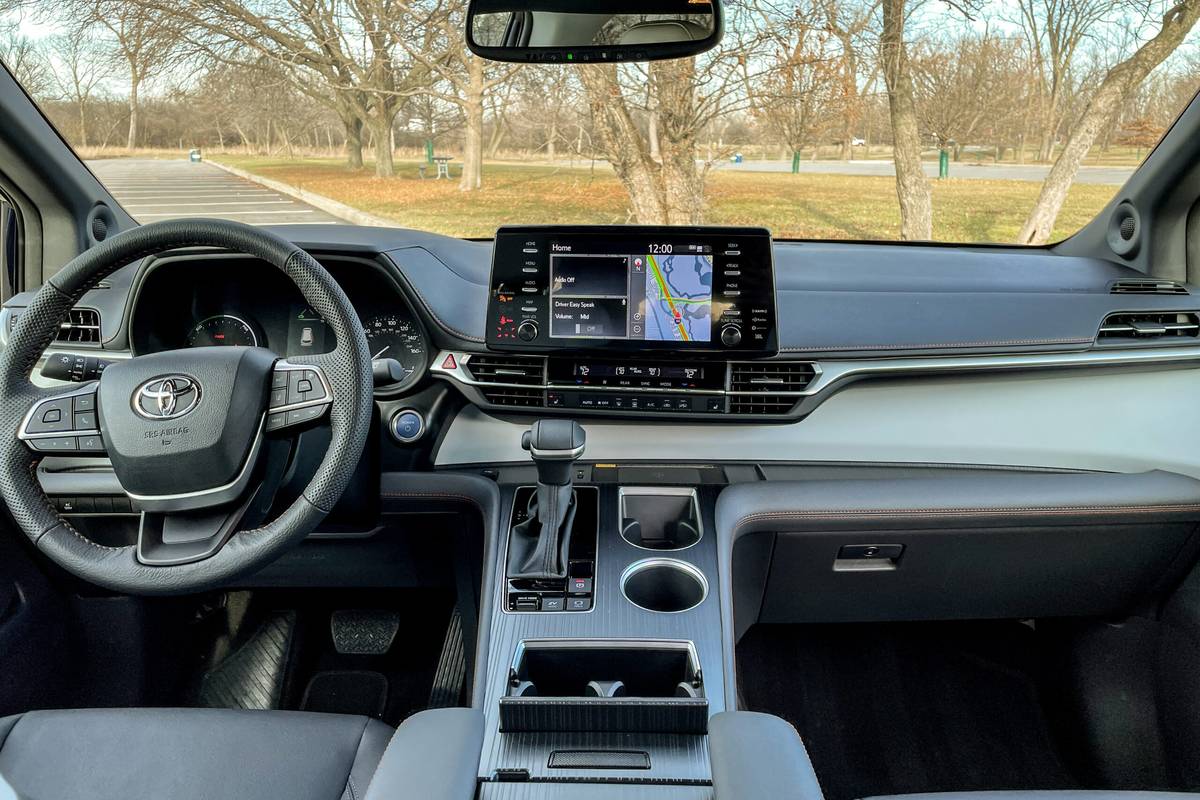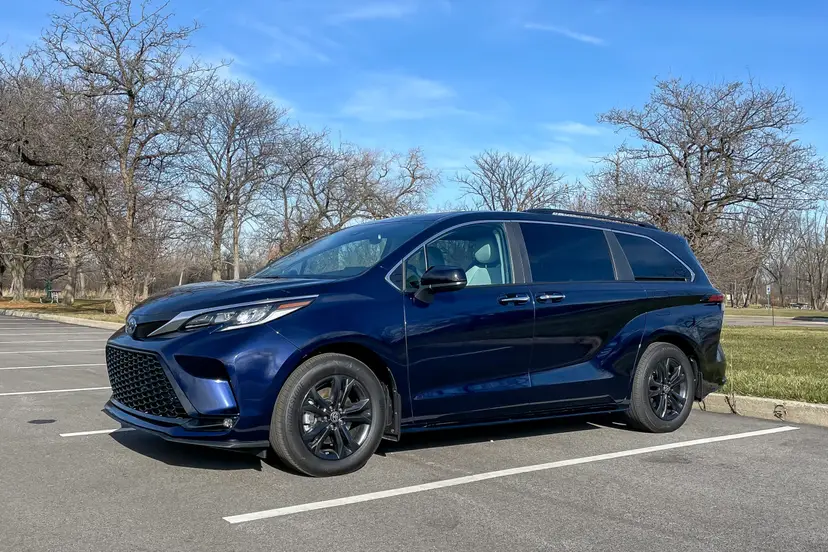
The verdict: With a standard hybrid drivetrain and available all-wheel drive and second-row captain’s chairs that can slide a long way forward and back, the 2024 Toyota Sienna minivan has a number of compelling attributes for families who haven’t made the switch to a three-row crossover SUV.
Versus the competition: The Chrysler Pacifica is the only minivan besides the Sienna that even offers a hybrid powertrain, but it’s a plug-in hybrid with a considerably higher starting price than the Toyota. More competition, however, is coming in the form of a 2025 Kia Carnival with a new optional hybrid drivetrain.
Minivans were once the family vehicle of choice, but their family-mover status has been overtaken in recent years by SUVs of varying sizes. The number of available new models for minivan adherents to choose from is quite low: There are just four 2024 models on the market, including the Chrysler Pacifica and Pacifica Hybrid, the Honda Odyssey, Kia’s Carnival and the Toyota Sienna. (The fleet-oriented Chrysler Voyager, which is related to the Pacifica, could be considered a fifth option.)
Related: I Drove the 2024 Toyota Sienna Hybrid to See What I’m Missing in My 3-Row SUV
The class is small, but if you’re searching for maximum passenger comfort and interior versatility this side of a full-size, truck-based SUV (like a Chevrolet Suburban), a minivan is still a great choice — if not the most popular one.
For this review, we tested a 2024 Toyota Sienna XSE with all-wheel drive, which starts at $47,530, including destination. Its optional features included a rear-seat entertainment system, wireless charger, navigation, JBL speakers, an integrated dash cam and some protective accessories, which raised its as-tested price to $50,899.
How It Drives
The Sienna’s hybrid drivetrain offers decent power in around-town driving, and it gets up to highway speeds easily. There’s not a lot of reserve power if you floor the accelerator pedal while traveling at highway speeds, but the extra oomph that is available comes on quickly thanks to its electrified drivetrain. Total system output from the hybrid powertrain is 245 horsepower.
The Sienna delivers serene quietness when operating on electric power alone, but that smooth and quiet experience is regularly disrupted by the 2.5-liter four-cylinder gas engine firing back up; it’s like hearing someone in a library constantly clearing their throat. It’s not the only sound you have to contend with, either, as there’s noticeable wind noise when cruising at highway speeds.
A big plus of this drivetrain, which separates it from most of the Sienna’s admittedly small competitive set, is its fuel economy. Apart from the plug-in hybrid Pacifica, which earned an EPA-estimated 82 mpg-equivalent combined rating when operating on electric power, the 2024 Sienna’s 36 mpg combined rating with front-wheel drive and 35 mpg with AWD are well above the next-closest gas-only models, several of which are rated 22 mpg combined. The Sienna’s EPA estimates are also higher than the 2024 Pacifica Hybrid’s 30 mpg combined rating when it’s operating like a regular gas-electric hybrid, after its battery pack has been depleted. In my time driving an AWD Sienna XSE, the trip computer showed gas mileage of anywhere from 30 mpg in Chicago traffic to 36 mpg on suburban streets and interstates.
Another valuable (though not class-exclusive) feature of the Sienna is its available AWD system; rather than using a driveshaft to send power to the rear wheels, the Sienna has a rear electric motor that powers them. The availability of AWD has helped drive the popularity of SUVs, and its presence in the minivan class may make some shoppers reconsider this vehicle type.
Like other minivans, the Sienna’s seating position is more SUV- than car-like, with higher driver and front-passenger seats. A power height-adjustable driver’s seat lets you raise it even higher. Forward, side and over-shoulder views are good thanks to thin roof pillars and large windows, but rear visibility is limited by the Sienna’s surprisingly small rear window. Its backup camera compensates for the slim rear window when reversing, but the camera’s image on the center dashboard screen is disappointingly low-resolution, especially in light of the crisp, clear backup camera views in other vehicles.
The XSE trim has a sport-tuned suspension and darkened 20-inch wheels and tires when equipped with FWD, or 18-inch wheels and tires with AWD. Ride quality with the 18-inch wheels and tires is firm and controlled, but thankfully not harsh or jarring on rougher pavement. Other trims with the non-sport suspension might offer a cushier ride, but it’s quite livable in the XSE with 18-inch wheels.
Plenty of Room in All Three Rows
The Sienna’s front bucket seats are large and comfortable. The front seating area is partitioned by a large center console, but Toyota incorporated a lot of useful storage areas into it. There’s a large bin between the center armrests, four cupholders ahead of it, a wide tray on the dash that includes the available wireless charging pad and a huge open storage area below the gear selector that’s big enough for a small backpack. There are also upper and lower front door pockets for smaller items.
Apart from the infotainment system’s dashboard touchscreen, the Sienna’s interior avoids touch-sensitive controls. We thank Toyota for that; the climate-control and audio systems are easy to operate with their conventional buttons, switches and knobs. The 9-inch infotainment screen, however, runs Toyota’s older multimedia interface, which is slowly being phased out. The system works well, but it doesn’t look as modern as Toyota’s newer system or ones from other automakers. Apple CarPlay and Android Auto connectivity are standard.
Our van had the Sienna’s available super-long-slide second-row captain’s chairs, which can slide rearward until they’re touching the third-row seat. With the third row folded, you can slide the seats even farther back, to the point that I couldn’t touch the back of the driver’s seat with my legs straight out (I’m 6-foot-1). You can also slide the second-row chairs very close to the front seats, which parents with small children in car seats will appreciate.
The super-long-slide seating setup makes for massive second-row space when the seats are in their rearmost position, letting taller passengers really stretch their legs, but as a dad of three boys, I can already picture one of them thinking it would be fun to slide the seat all the way back to pin his brother sitting behind him. I think I’d pass on this feature because of that possibility, but I can see how others would be drawn to it.
There are a reasonable number of second-row amenities in the Sienna, including overhead air vents, a couple USB charge ports, an optional household outlet that can handle power-hungry devices (thanks to a 1,500-watt inverter) and overhead climate controls with an Auto setting. There are also standard retractable sunshades.
With the second-row captain’s chairs positioned at a spot where I was comfortable and had plenty of legroom, I was able to sit in reasonable comfort behind them in the third row. The third row’s bench seat doesn’t offer great thigh support, and your knees are a bit elevated, but headroom is good, and the space doesn’t feel confining or claustrophobic. The third row has a bit of a rickety feel when folding it into its well in the floor, and the extended cargo floor you’ll create by doing so isn’t particularly smooth, but at least it’s easy to lower and raise the split-folding seat quickly using its handles.
More From Cars.com:
- 2024 Toyota Sienna Gets New Premium Package, Starts at $38,580
- Minivan Crash Tests: Front-Seat Safety Improves, Backseat Safety Declines
- Which Hybrid Vehicles Have All-Wheel Drive?
- Research the 2024 Toyota Sienna
- Shop for a 2024 Toyota Sienna
Safety
The 2024 Sienna earned a 2024 Top Safety Pick designation from the Insurance Institute for Highway Safety for its crash-test, headlight and pedestrian front-crash-prevention performance. Standard active safety features include forward collision warning with automatic emergency braking, blind spot warning with rear cross-traffic alert, lane departure warning with steering assist, Lane Tracing Assist, adaptive cruise control and automatic high-beam headlights. Safety options include a 360-degree camera system, head-up display, and front and rear parking assist with automatic braking.
Should You Buy a 2024 Toyota Sienna?
If you’re in the market for a spacious, comfortable and fuel-efficient family hauler — and you aren’t dead set on a three-row SUV — the Sienna should serve your needs well. It’s not as trendy as Toyota’s newest family hauler, the three-row Grand Highlander (which offers a choice of three powertrains, including two hybrid systems), but what the Sienna lacks in style it makes up for in utility. And with a starting price around $39,000 for a base LE trim with FWD, the Sienna is also less expensive than the base Grand Highlander XLE ($44,715) and the smaller Highlander LE ($40,665). Minivans are about as practical as it gets, and the Sienna is proof of that.
Related Video:
We cannot generate a video preview.
Cars.com’s Editorial department is your source for automotive news and reviews. In line with Cars.com’s long-standing ethics policy, editors and reviewers don’t accept gifts or free trips from automakers. The Editorial department is independent of Cars.com’s advertising, sales and sponsored content departments.






























